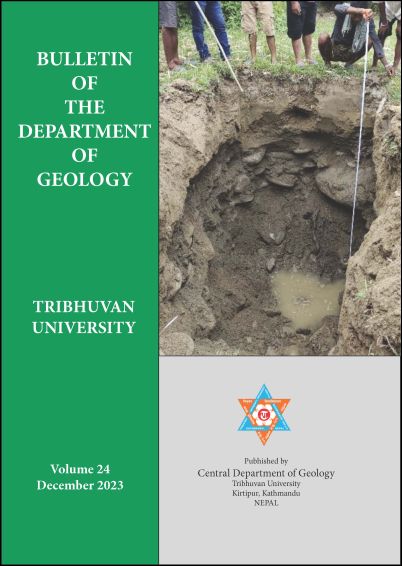Tectonic Stress Analysis of Shivnath-Salena Area, Using Stress Response Structure
DOI:
https://doi.org/10.3126/bdg.v24i.68375Keywords:
Structure, Slickenside, Stress, Extensional, TectonicAbstract
The geological mapping of the Shivnath-Salena area and structure analysis of the same area were conducted in the Lesser
Himalayan sequence, Far West Nepal, unveiling the characteristics of kinematics and the associated stress field in the region. The
area comprises of the Salena Formation and Chachura Formation. The Salena Formation is sandwiched between the Pachkora
Thrust and Dudulakhan Thrust, and the Chachura Formation occurs between the North Dadeldhura Thrust and Pachkora Thrust.
The Salena Formation is composed of light grey and white quartzite and black slates that are intensely deformed, with folds. The Malena Anticline and the Lamalek Syncline are the intraformational folds observed in the study area. Superimposed folding was also observed. The Chachura Formation comprises Paleocene to Late Eocene green sandstone, grey and purple shale, and approximately 1 m thick grey fossiliferous limestone. This study interprets stress-response structures to show the tectonic stress field in the Salena Formation. Twenty-seven fault slip data (slickenside) were collected in the field and used to determine the stress regime by applying the stress inversion technique. The direction of the maximum principal stress axes is interpreted as NE-SW. The average value of the stress index R' is about 0.30, indicating an extensional tectonic stress regime in the study area. As σ1 is vertical, R = R' in the study area suggests normal faulting in an extensional regime.
Downloads
Downloads
Published
How to Cite
Issue
Section
License
© Central Department of Geology, Tribhuvan University, Nepal

